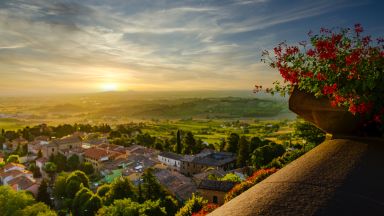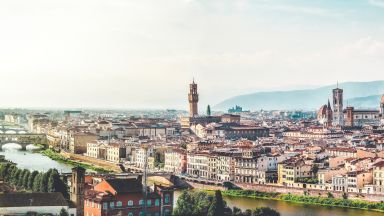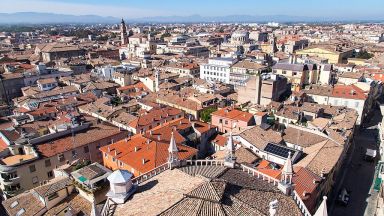Ferrara: The Complete Guide
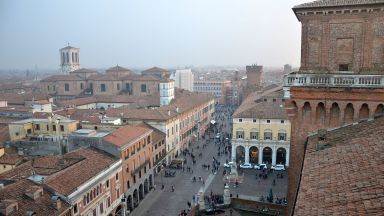
Ferrara is a city located in the Emilia-Romagna region of Italy, situated near the eastern Adriatic coast and positioned at the top of Italy’s boot-shaped peninsula. This charming city is recognized as a UNESCO World Heritage site. For a period of three centuries, Ferrara was under the rule of the Este family, whose Renaissance court was renowned as one of the finest in Italy. This court attracted notable artists and writers, including Ludovico Ariosto, the author of Orlando Furioso.
Ferrara is still surrounded by its well-preserved 6-mile-long defensive wall, making it an excellent route for cycling or walking, with green parks located outside the walls. However, not all parts of the city within the walls share the same historical significance. If you enter Ferrara through the broad Viale Cavour, you might wonder where the historic buildings are located. But by taking a side street, you’ll find yourself in the city’s intricate network of medieval and Renaissance streets. Exploring with a map, available from the tourist information office in the courtyard of the Castello Estense, is advisable, as these picturesque streets extend for quite a distance. While only a few lanes are pedestrianized, many of Ferrara’s residents prefer to navigate the city on old bicycles, even on its cobblestone streets.
This is complete guide is for first-time visitors to Ferrara and is ideal for those who are looking to plan activities for their one day in Ferrara. To make the most of your visit to Ferrara, I recommend this 3 hour walking tour of Ferrara with a local guide.
Visiting Ferrara for the first time and wondering what are the top places to see in the city? In this complete guide, I share the best things to do in Ferrara on the first visit. To help you plan your trip, I have also included an interactive map and practical tips for visiting!
This website uses affiliate links which earn a small commission at no additional cost to you.
10 Best places to See in Ferrara
This complete guide to Ferrara not only tells you about the very best sights and tourist attractions for first-time visitors to the city but also provide insights into a few of our personal favorite things to do.
This is a practical guide to visiting the best places to see in Ferrara and is filled with tips and info that should answer all your questions!
Estense Castle
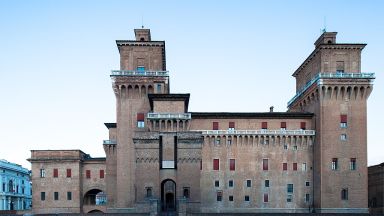
Location: Estense Castle, Largo Castello, Ferrara, Province of Ferrara, Italy | Hours: 10.00 - 18.00 (ticket office closes 45 min. before). Closed on Tuesday. | Price: €12 | Website | Estense Castle Guided Tour | Distance: 0.00km
Visiting Estense Castle
Ferrara Cathedral

Location: Ferrara Cathedral, Piazza della Cattedrale, Ferrara, Province of Ferrara, Italy | Hours: Every day 9.00-12.00 / 15.00.18.00.| Price: Free / Donation | Distance: 0.30km
Visiting Ferrara Cathedral
Museo della Cattedrale, Ferrara
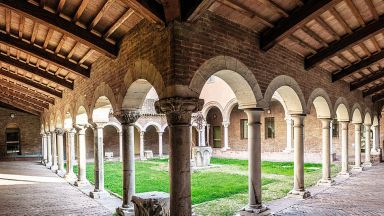
Location: Museo della Cattedrale (San Romano), Via San Romano, Ferrara, Province of Ferrara, Italy | Hours: 9.30-13.00 / 15.00-18.00. Closed on Monday.| Price: €6 | Website | Distance: 0.30km
Visiting Museo della Cattedrale, Ferrara
National Picture Gallery, Ferrara
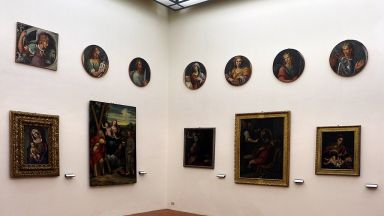
Location: Pinacoteca Nazionale, Corso Ercole I d'Este, Ferrara, Province of Ferrara, Italy | Distance: 0.40km
Visiting National Picture Gallery, Ferrara
Palazzo dei Diamanti, Ferrara
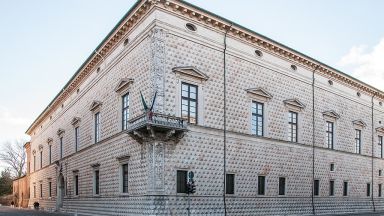
Location: Palazzo dei Diamanti, Corso Ercole I d'Este, Ferrara, Province of Ferrara, Italy | Hours: Visits are possible during the opening hours of the National Picture Gallery and of the Gallery of Modern and Contemporary Art.| Website | Distance: 0.50km
Visiting Palazzo dei Diamanti, Ferrara
Palazzina Marfisa d'Este
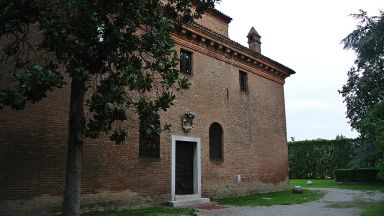
Location: Palazzina Marfisa d’Este, Corso della Giovecca, Ferrara, Province of Ferrara, Italy | Distance: 1.00km
Visiting Palazzina Marfisa d'Este
Santa Maria in Vado, Ferrara
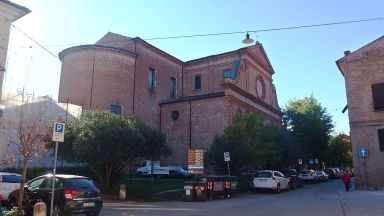
Location: Santa Maria in Vado, Via Borgovado, Ferrara, Province of Ferrara, Italy | Distance: 1.00km
Visiting Santa Maria in Vado, Ferrara
Palazzo Schifanoia, Ferrara
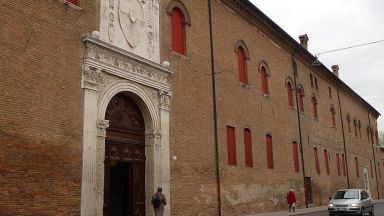
Location: Palazzo Schifanoia, Via Scandiana, Ferrara, Province of Ferrara, Italy | Hours: Open: 10.00-19.00. Ticket office closes at 18.00. Closed on Monday. The ticket includes the visit of the Lapidary Museum | Price: €12 | Distance: 1.10km
Visiting Palazzo Schifanoia, Ferrara
Civico Lapidario, Ferrara
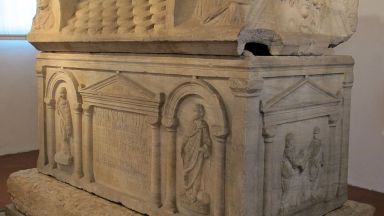
Location: Civico Lapidario (ex Chiesa di Santa Libera), Via Camposabbionario, Ferrara, Province of Ferrara, Italy | Hours: 10.00-19.00. Ticket office closes at 18.00. Closed on Monday. The Lapidary can be visited with the same ticket used for Palazzo Schifanoia | Website | Distance: 1.20km
Visiting Civico Lapidario, Ferrara
National Archaeological Museum of Ferrara
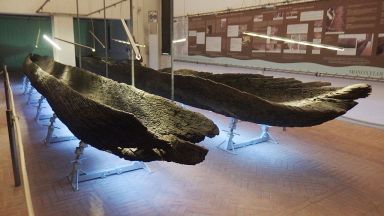
Location: National Archeological Museum of Ferrara, Via XX Settembre, Ferrara, Province of Ferrara, Italy | Hours: 9.30-17.00. (Ticket office closes at 16.30). Closed on Monday. | Price: €9 | Website | Distance: 1.30km
Visiting National Archaeological Museum of Ferrara
Best Time to Visit Ferrara
Ferrara, Italy, a hidden gem of the Emilia-Romagna region, offers visitors a unique blend of history, art, and culinary delights. Here’s a guide to the best time to visit Ferrara:
- Spring (March to May): Spring is a delightful time to visit Ferrara as the city bursts into bloom with colorful flowers and lush greenery. The weather is mild, making it perfect for exploring the city’s historic center, which is a UNESCO World Heritage Site. Spring also brings a variety of cultural events and festivals to Ferrara, including the internationally renowned Ferrara Buskers Festival, which features street performers from around the world.
- Summer (June to August): Summer is peak tourist season in Ferrara, with warm temperatures and long daylight hours. This is the best time to explore the city’s outdoor attractions, such as the magnificent Castello Estense and the tranquil Parco Massari. Visitors can also enjoy outdoor concerts, art exhibitions, and food festivals throughout the summer months. However, be prepared for larger crowds and higher temperatures during this time.
- Fall (September to November): Fall is another excellent time to visit Ferrara, as the weather remains pleasant, and the summer crowds begin to dissipate. This season is ideal for exploring the city’s many museums and galleries, including the Palazzo dei Diamanti and the Museo della Cattedrale. Fall also offers opportunities for culinary experiences, such as truffle hunting in the nearby countryside and sampling traditional dishes like cappellacci di zucca (pumpkin-filled pasta) and salama da sugo (a local sausage).
- Winter (December to February): Winter in Ferrara is relatively quiet, with fewer tourists and cooler temperatures. This season offers a more intimate experience for visitors, with shorter lines at popular attractions and the opportunity to explore the city’s historic streets without the crowds. Winter is also a great time to indulge in the region’s culinary specialties, such as bollito misto (mixed boiled meats) and cotechino con lenticchie (sausage with lentils), at cozy trattorias and osterias throughout the city.
Ultimately, the best time to visit Ferrara depends on your preferences for weather, crowds, and activities. Whether you’re interested in exploring historic landmarks, enjoying outdoor festivals, or savoring delicious cuisine, Ferrara has something to offer for every traveler throughout the year.
Average Temperatures in Ferrara
- January 11°C 51°F 5
- February 13°C 56°F 9
- March 18°C 65°F 7
- April 22°C 71°F 8
- May 27°C 80°F 13
- June 33°C 91°F 8
- July 36°C 96°F 9
- August 34°C 94°F 8
- September 29°C 84°F 10
- October 24°C 76°F 8
- November 16°C 60°F 11
- December 10°C 50°F 6
How to get to Ferrara
Flying to Ferrara
The easiest and fastest way to reach Ferrara is flying to Bologna airport. Indeed, this is the closest airport to the city (about 45 km), even though other solutions are possible, such as flying to Venice, Verona or Milan Bergamo airports as well.
Ferrara by Train
Ferrara is conveniently situated on a railway line connecting Venice and Bologna, allowing for direct regional train connections to Venice, with a travel time of about an hour and a half. This makes it feasible to visit one city as a day trip from the other. For those arriving by train, there are two primary ways to reach the historic centre of Ferrara. The first option is to walk, which takes approximately twenty minutes. To do this, simply exit the train station’s ticket hall, cross the main road, and head to the left. Then, follow the bustling Viale Cavour as it curves to the right. This street runs straight through the town and leads to the Castello Estense. To help you navigate, there is a map displayed on a board outside the train station. Remember to always validate your train tickets before getting on the train if you have a paper ticket.
Travel to Ferrara by Car
Ferrara boasts excellent connectivity through the Italian road and highway network.
- From Bologna: Access the A13 Autostrada Bologna-Padova and exit at Ferrara south or north, a journey of about 45 minutes.
- From Ravenna: Drive along the SS16 into the eastern parts of Ferrara, covering approximately 79 kilometers in around 1 hour and 20 minutes.
- From Padua: Head south on the A13 for a 78-kilometer drive, taking about one hour.
Moreover, the A13 is seamlessly linked to the A1, a major artery connecting all significant roads in northern Italy. This integration ensures that Ferrara is exceptionally well-connected to major cities across the country.
Travel within Ferrara
Alternatively, you can opt to catch a local bus into the historic centre. Local city buses in Ferrara are operated by a company known as TPER (Emilia-Romagna Passenger Transport), and you can access their timetables (orari) on their website.
Guided Bike Tour of Ferrara
Ferrara is renowned as a “città della bicicletta,” where a significant portion of the population relies on bicycles for their daily transportation. Beyond the city center, roads feature dedicated cycle lanes, and within the center itself, traffic is restricted, even though the streets are predominantly cobblestone. The tourist office provides information on routes within the city and extending into the Po Delta Park. For an introduction to cycling around Ferrara try this Guided Tour by Bike!
